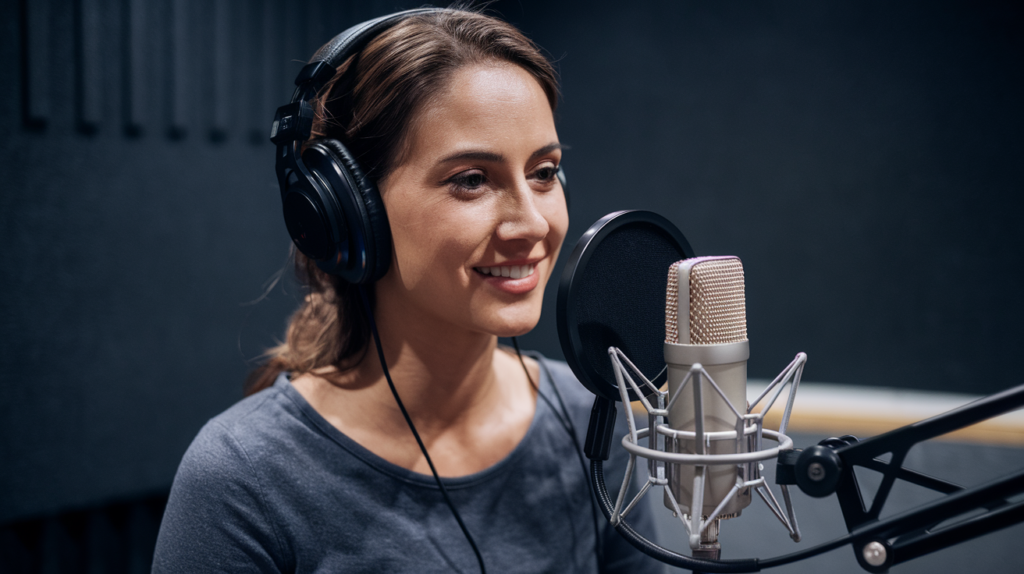Key Takeaways
- Authenticity Matters: Regional Romanian accents enhance voiceovers by adding depth and making the content more relatable to local audiences.
- Distinct Accents: Each Romanian region has unique accents—Transylvanian, Moldovan, Wallachian, and Banat—each contributing different emotional tones and characteristics to voice projects.
- Audience Engagement: Utilizing regional accents can significantly improve audience engagement by creating familiarity and trust in advertising, marketing, and storytelling contexts.
- Mastering Techniques: Voiceover artists should focus on understanding the nuances of each accent through practice and exposure to native speakers for improved delivery.
- Media Applications: Regional accents play a crucial role in various media formats like film, television, and advertising by enhancing character portrayal and brand messaging.
Ever wondered how regional Romanian accents can transform your voiceover projects? If you’re diving into the world of voice acting or simply looking to add authenticity to your content, understanding these unique accents is key. Each region in Romania boasts its own distinct sound and character, which can make all the difference in how your message resonates with listeners.
Overview Of Regional Romanian Accents
Regional Romanian accents add depth and authenticity to voiceovers, making them essential for effective communication. Understanding these accents helps you choose the right voice actor for your project.
Importance In Voiceover Work
Accents shape how audiences perceive messages. Using a regional accent can evoke familiarity and resonate with local listeners, enhancing engagement. A skilled voice over artist can adapt their delivery to match specific accents, ensuring that the content feels relevant and relatable. This connection boosts credibility, making your message more impactful in diverse markets.
Characteristics Of Each Accent
Romania boasts several distinct regional accents:
- Transylvanian Accent: Known for its melodic tone, this accent often features softer consonants and a sing-song quality.
- Moldovan Accent: Characterized by its slightly nasal sound, it has unique intonations that convey warmth and friendliness.
- Wallachian Accent: This accent is marked by its strong emphasis on certain vowels, creating a bold and assertive style.
- Banat Accent: Influenced by neighboring languages, this accent incorporates various speech patterns that make it quite dynamic.
Each of these accents offers unique qualities that enhance voiceovers. Selecting an appropriate accent can significantly influence how your audience relates to the content.
Types Of Regional Romanian Accents
Regional Romanian accents offer distinct flavors that can enhance your voiceover projects. Each accent brings unique qualities, making them pivotal in connecting with various audiences.
Transylvanian Accent
The Transylvanian accent stands out for its melodic and rhythmic quality. Characterized by a soft intonation, this accent often evokes a sense of folklore and tradition. Voice actors adopting this accent can effortlessly convey warmth and familiarity, making it ideal for storytelling or historical content. If you aim to create an engaging narrative, selecting a voice talent skilled in the Transylvanian sound can add depth to your project.
Moldovan Accent
The Moldovan accent is known for its warm and approachable tone. It tends to be clear and expressive, perfect for conveying emotion in voiceovers. This accent carries influences from both Romanian and Russian languages, lending it a unique charm that resonates with listeners. For projects requiring sincerity or connection—like commercials or personal messages—a voice artist who masters the Moldovan accent can significantly enhance audience engagement.
Wallachian Accent
The Wallachian accent has a bold and assertive character, making it very effective in grabbing attention. Its dynamic pronunciation often conveys confidence and authority, which works well for persuasive messages or promotional materials. A voice over actor using the Wallachian sound can instill trust in your listeners while delivering impactful content that resonates with diverse demographics.
These regional accents not only enrich the audio experience but also play a crucial role in how viewers perceive your message across different markets. Selecting the right accent aligns closely with your project’s goals, ensuring maximum impact on your target audience.
Techniques For Voiceover Artists
Mastering regional Romanian accents enhances your voiceover capabilities. Understanding the nuances of each accent can elevate your performance and connect with diverse audiences.
Mastering Regional Nuances
Familiarize yourself with the distinct characteristics of various Romanian accents. Listen to native speakers to grasp their unique rhythms and intonations. Pay attention to how emotions shift within different regions. For instance, the Transylvanian accent has a melodic quality that adds warmth, while the Wallachian accent exudes boldness and assertiveness. Practice mimicking these accents by recording yourself and comparing your delivery to authentic examples. This technique sharpens your ear for subtle variations, making you a more versatile voice artist.
Practicing Pronunciation
Clear pronunciation forms the foundation of effective voiceovers. Focus on articulating sounds specific to each regional accent. Use tools like phonetic charts or online dictionaries to refine tricky words or phrases commonly used in Romanian dialects. Regularly practice tongue twisters that incorporate regional sounds; this method builds muscle memory for accurate pronunciation during recordings. Additionally, engage in dialogue with native speakers whenever possible—this exposure fosters familiarity and helps you sound more natural as a voice actor.
Implementing these techniques boosts your skills, ensuring you deliver high-quality performances tailored to specific markets’ needs.
Applications In Media
Regional Romanian accents play a vital role in various media applications, enhancing authenticity and audience connection through voiceovers. Understanding how these accents impact different sectors can guide you in selecting the right voice talent for your projects.
Film And Television
In film and television, regional accents enrich character development and storytelling. A skilled voice actor can bring characters to life by embodying the unique qualities of a particular accent. For instance, using the melodic Transylvanian accent can add depth to a romantic scene, while the bold Wallachian accent works well for strong-willed characters during conflict. These nuances not only enhance believability but also resonate with audiences familiar with those regions.
Advertising And Marketing
Advertising and marketing benefit significantly from regional accents in voiceovers. When messages are delivered using authentic local sounds, they foster trust and familiarity among target audiences. The warm Moldovan accent can create an emotional bond in heartfelt campaigns, while the dynamic Banat accent captures attention effectively in energetic promotions. By choosing a voice artist who understands these subtleties, your brand messaging becomes more engaging and relatable, ultimately driving better results across diverse markets.
Incorporating regional Romanian accents into your media projects ensures that your message stands out while reaching audiences on a personal level.
Conclusion
Embracing regional Romanian accents in voiceovers isn’t just a stylistic choice; it’s a strategic advantage. By understanding the unique characteristics of each accent, you can enhance authenticity and engagement in your projects. Whether it’s the melodic tones of Transylvania or the boldness of Wallachia, these accents offer opportunities to connect with audiences on a deeper level.
Mastering these accents not only elevates your performance but also ensures your messages resonate more effectively. As you incorporate these elements into your work, you’ll find that the right accent can transform how viewers perceive and relate to your content. Dive into this rich tapestry of sounds and watch as your voiceover projects reach new heights of impact.
Frequently Asked Questions
Why are regional Romanian accents important in voiceover projects?
Regional Romanian accents enhance authenticity and emotional connection in voice acting. Each accent reflects the unique character of its region, influencing how messages resonate with listeners. This specificity helps select the right voice actor, ensuring effective communication tailored to diverse audiences.
What are some distinct Romanian accents mentioned in the article?
The article highlights several key Romanian accents: the melodic Transylvanian accent, the warm Moldovan accent, the bold Wallachian accent, and the dynamic Banat accent. Each offers unique qualities that can significantly influence audience engagement and perception of content.
How can voiceover artists master regional Romanian accents?
Voiceover artists can master these accents by listening to native speakers, practicing pronunciation, recording themselves for comparison, using phonetic charts, and engaging in dialogue with locals. These techniques help refine skills and improve performance tailored to specific market needs.
In what media sectors are regional Romanian accents utilized?
Regional Romanian accents are used extensively in film, television, advertising, and marketing. They enrich storytelling by enhancing character development and believability while fostering trust among target audiences through relatable brand messaging.
How do regional accents affect audience perception?
Accents shape how an audience perceives a message by evoking familiarity and emotional responses. Using authentic local sounds makes content more engaging and relatable, ultimately driving better results across different markets by enhancing connection with viewers.







